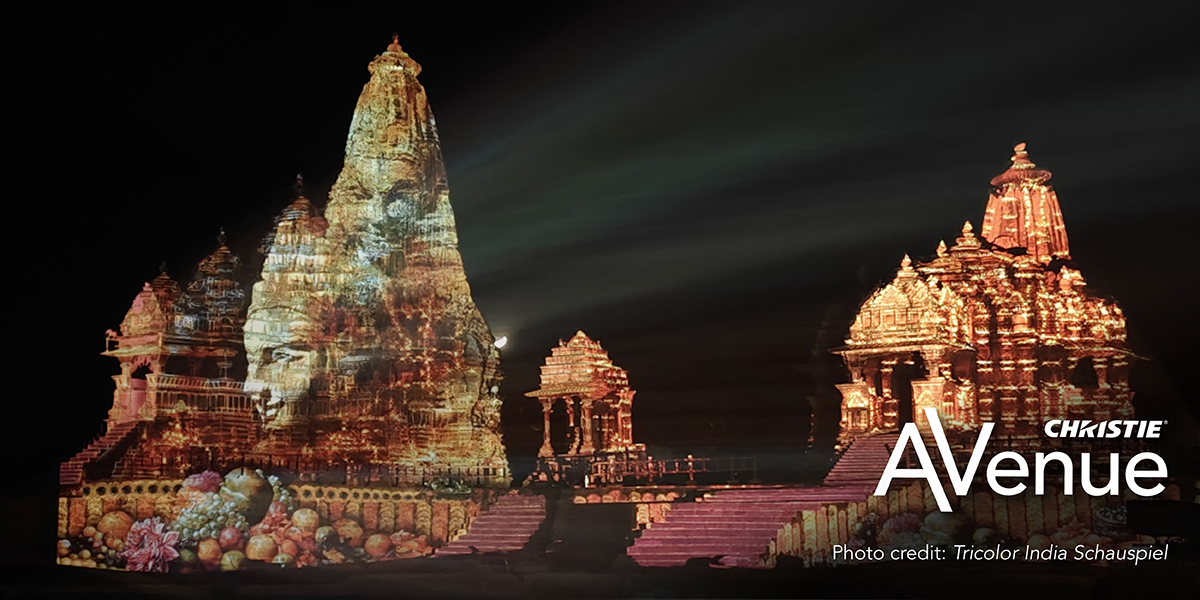The doors of perception: Building a sense of place with Tricolor's Himanshu Sabharwal

When asked about his sense of place, Tricolor India’s Himanshu Sabharwal instantly offers two examples from his country’s past: The Victoria Memorial in Kolkata, built by the British during the time of the Raj, and Khajuraho Temples in Madhya Pradesh, built by Hindu kings Yashovarman and Dhanga around one thousand years ago.
“The Grandeur of the European is very different from the intricacies of temple architecture,” he says. “And because how it makes you feel is different, so is our approach.”
The most important factor
By expertly tapping into a sense of place that’s often centuries in the making, Himanshu and Tricolor have built a reputation for architectural projection mapping that transcends the spectacular to reach something entirely new and emotionally powerful.
That means working with the architecture rather than using it as a mere backdrop. As Himanshu says, “The first thing you must do, certainly if you come from cinema and television as I did, is mentally move away from flat screens and blank canvasses. The building and the emotions it stirs are the most important factors.”
The Khajuraho Temples is undoubtedly a place that stirs the emotions of visitors. Famous for the Nagara-style architectural symbolism, the temples have been on the UNESCO World Heritage List since 1986. They speak of a time and a society that’s long passed but comes alive again in spectacular laser-lit projection mapping every summer night. But Himanshu explains that a spectacle, for spectacle’s sake, rarely works.
“You will not be able to create anything wonderful, no matter what you do, unless it respects the architecture and its sense of place. The building has a character that lends itself to the process of creating whatever you do; you must reveal that truth first,” he says.
Your treatment must change
The Victoria Memorial in Kolkata is a very different building with a very different story and purpose. Built by the British Raj to mark the death of Queen Victoria, this is unmistakably a building of empire and conquest during a time of colonialism. Yet, in 2021, using Christie Crimson Series 3DLP laser projectors, Tricolor helped turn it into a celebration of Indian nationalist Netaji Subhas Chandra Bose on the 125th anniversary of his birth.
“Victoria Memorial was a delight to work with because the building has all the grandeur associated with Victorian England. So, your treatment must change — because you are not dealing with an Indian building with its intricacies and carvings,” Himanshu explains. “The most important actor in any projection mapping will always be the building itself, no matter the story you wish to tell.”
Far more powerful
At the end of the night, it doesn’t matter if he’s working within a culture’s sense of place, as he did at Khajuraho Temples, or subverting it, as he did at Victoria Memorial. What matters is that Himanshu’s building-based approach leaves audiences with an enhanced sense of where they are and why that place matters. It’s far more powerful and lingers longer in the imagination than the spectacle alone. Although, as Himanshu says, both are important. “If you don’t have three classic images that people wake up with the next morning and say, ‘wow, that was amazing,’ then the show has not done what it needed to. Because that’s what they’re expecting. But if you can do that and be true to the story in a larger context, you’ve struck gold.”






